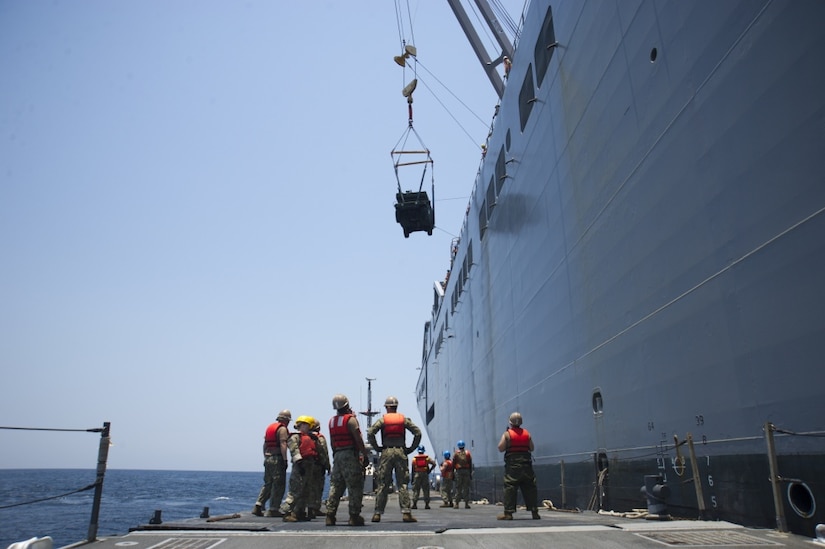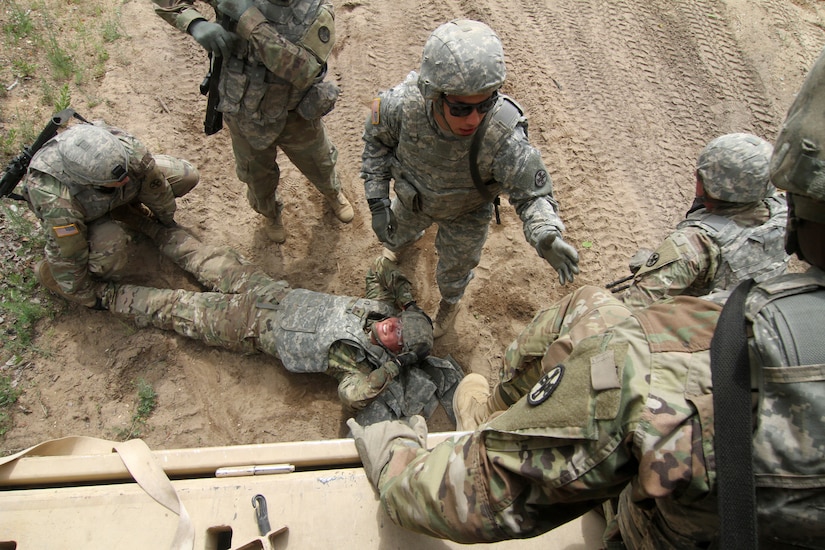By Army Sgt. 1st Class Jose Ibarra, DoD News, Defense Media
Activity
LOS ANGELES -- When people think of service members, they
typically think of combat arms jobs such as infantrymen or fighter pilots --
jobs you see in Hollywood movies.
Airman prepares cameras for production shoot.
The truth is that the military has a dynamic range of jobs
requiring a dynamic range of skills. Thinkers, problem solvers, creators and
artists -- yes, even artists -- all play their part in today’s military. Most
military jobs provide the necessary experience to succeed in the civilian
sector, whether it’s in logistics, law, the environment or the creative arts,
including graphic design and film.
One airman got more than he initially expected when he
raised his right hand and swore to support and defend the Constitution of the
United States. “I never dreamed of being able to create for the military,” said
Air Force Reserve Staff Sgt. Corban Lundborg as he described the first time he
was introduced to the creative side of the military. “While on active duty, I
rarely left the warehouse and didn’t know photojournalism existed.”
His first job in the Air Force was as a logistician, and one
day a supervisor asked if anyone wanted to be the base photographer. At the
time, Lundborg said, he was desperate to get out of the warehouse where he
worked, so he took the job and never looked back.
Seeking Adventure
As a high school senior, Lundborg said, he knew he wanted
more than four more years of sitting in a classroom. He wanted adventure.
During his senior year, he was into boxing and spent his after-school time at a
local boxing gym. A lot of veterans hung out there, he said, and they told him
about the Air Force. At that moment in his life, Lundborg said, he knew he had
to make a change for the better.
“I had absolutely no idea what to expect, other than I
needed to get out my environment,” he said. So, at age 18, Lundborg enlisted in
the Air Force on an “open general” contract -- meaning without a specific job
-- and left, as he said, “ASAP.”
Lundborg was off to Korea for a year, followed by three
years in Italy. He planned to do four years of active service and then reassess
his life. Though he was not satisfied with his initial supply job, he said,
overall he enjoyed the Air Force.
“I joined to travel and learn a little about the world. I
got what I signed up for and wouldn’t change a thing,” Lundborg said. He had
gone from hardly leaving the Midwest to being an international explorer.
The experience was “nothing short of life-changing,” he
said.
“I don’t think I could even put into words how my travels
impacted my perspective on culture, opportunity and the people around me,”
Lundborg added.
Being Creative in the Military
“It’s really a dream come true to work an Air Force job that
so closely aligns with my life’s passion,” Lundborg said. After his four-year
active-duty contract was over, he decided to go to the Air Force Reserve, where
he has established himself as a capable storyteller.
“I’ve been tasked for projects [from] co-directing creative
production sets to flying into the eye of a hurricane on a day’s notice,” said
Lundborg, who now serves in the Air Force Reserve as a photojournalist with the
4th Combat Camera Squadron at Joint Base Charleston, South Carolina.
Looking back, he said, the Air Force helped to make him who
he is today. “The Air Force taught me to set goals and showed me my ability to
push perceived limits,” Lundborg explained. “I’ve learned success is nothing
more than constructive daily habits manifested over time.”
As an Air Force reservist, Lundborg can enjoy the best of
both worlds: his military career and his desire to be a successful artist and
entrepreneur. His military photography inspires his paintings and vice-versa,
he said, and his artistic eye helps his ability to tell the Air Force story.
Out of the Uniform into Entrepreneurship
While stationed in South Korea, Lundborg started studying
the art of tattooing and that reignited his love for the arts. From there, he
continued to create, starting his first business at age 20 while stationed in
Italy. He was selling paintings out of his dorm room, where he started his
“Cold Studio” brand, growing it day by day. He is now 26, and that same
business is now booming in Los Angeles. “It is so fun to look back on the
journey,” he said.
Lundborg’s global journey continues. He travels to work on
art projects around the world, and he has even gone “rogue,” spending a year
living and working out of a mobile studio on a cross-country art tour. His
entrepreneurial journey has taught him to take risks, to trust and also to
celebrate the small victories, he said. “The entrepreneur life is a windy road
-- one day you’re heading this way, then the next you are taking the business
in a new direction,” Lundborg said.
There is a saying that “If you love what you do, you will
never work one day in your life.” Lundborg is the living proof. “It has been so
rewarding that just this week my wife and I launched a second business that
focuses on media production,” he said.
The Future
“The Air Force has no doubt shaped me as a man, an artist
and as entrepreneur,” he said, adding that he plans to continue to grow his
fine-art company. Lundborg said he hopes his media production company will
similarly take root into something inspiring. “I’ve always focused on providing
exceptional service and quality to the customer, and because of that, there has
never been a shortage in income or work,” he said.
You can follow Corban Lundborg on social media and
occasionally watch him go live on Facebook from his studio in North Hollywood
as he works on paintings that range from modern portraits to works that spread
social awareness of world issues such as pollution and veterans issues.









